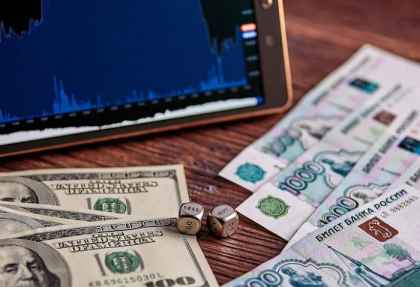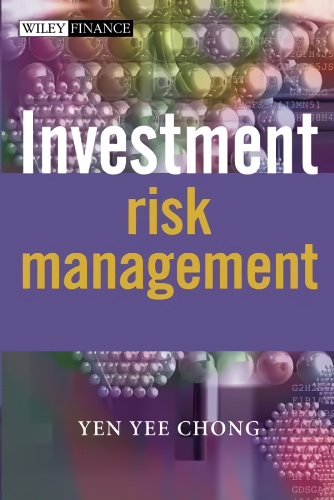In forex trading, risk/reward ratio is one of the most important concepts to understand. This article will discuss what risk/reward ratio is, how to calculate it, and how to use it to improve your trading.

Forex trading, the largest financial market in the world, offers countless opportunities for investors to profit from currency fluctuations. However, along with the potential for significant gains, there is an inherent element of risk. To navigate these waters successfully, traders must understand the principles of risk management and how to assess the risk/reward ratio.
In forex trading, risk/reward ratio is one of the most important concepts to understand. It is a measure of the potential profit or loss of a trade, relative to the amount of risk involved. A good risk/reward ratio can help you to increase your chances of profitability and reduce your losses.
In this article, we will delve into the concept of risk/reward ratio in forex trading, exploring its importance, calculation methods, and practical implications.
Understanding Risk/Reward Ratio
A risk/reward ratio refers to how much you expect to make on a trade, relative to how much you're willing to lose.
So let's say you bought an asset for $10.00 and you placed a stop-loss at $9.90. If you're willing to risk $0.10, then your potential risk is fixed at $0.10 (assuming no slippage).
While this number sounds really small, you should still counter it with a potential profit as well. Your profit target establishes your expected payoff.
If your analysis indicates that the price will reach, say, $10.20 and you place a take profit there, it means that your gain for every winning trade will be $0.20. In other words, your potential reward is twice as large as your potential risk. Therefore, your risk/reward ratio is $0.10/$0.20=0.5. We can say that your risk is half of your potential gain.
If we use a different scenario and place the stop loss at $10.10, then it means that your potential profit and risk are both $0.10 and the risk/reward ratio is $0.10/0.10=1.0. Now, what if you place a take profit at $10.05? Your potential risk is $0.10, but your reward is only $0.05. The increase of the risk/reward ratio to 2.0 shows that you're risking more to make less.
That being said, using a lower risk/reward ratio is considered safer. Even if you have a higher risk tolerance, it's still recommended to trade with a low risk/reward ratio in order to minimize losses.
Why You Need Risk/Reward Ratio
Most traders only focus on win rates because it sounds logical that the more you win, the higher the chance to profit. While it appears to be logical, having a high win rate doesn't necessarily guarantee that you'll be a successful trader.
You can have a win rate as high as 80% and still lose money if the losing trades are so big that they wipe out your winning trades. This is why you need to also pay attention to your risk/reward ratio when trading.
If you include a risk/reward ratio in your trading plan, it's even possible to create a profitable system that aims for only 30-50% win rates.
The key is to pay attention to the quality of wins and losses. The trade quality means that a trader's win/loss ratio, risk/reward ratio, and acceptable losses and risks are all taken into account when opening a buy or sell position.
If you weigh all of these elements in your trades, you will create a balance between your win rate and risk/reward ratio, which is vital for a trader's success.
How to Balance Win Rates and Risk/Reward Ratio
Now that you understand how to measure win rates as well as risk/reward ratio, it's important to know how to balance the two. Having a high win rate won't bring you any good if your risk/reward is also very high. Similarly, a high risk/reward ratio means nothing if the win rate is very low.
Here are some tips that you can use:
- A higher win rate means that your risk/reward ratio can be higher. You can still make profits with a 60% win rate and a risk/reward ratio of 1.0. However, the best scenario that you could have is a higher win rate and a lower risk/reward ratio.
- If your win rate is relatively low, around 50% or below, you should set a higher risk/reward ratio in order to be profitable. You can still be profitable if you have a 40% win rate and risk/reward ratio below 0.6 (excluding commissions). The more you lose, the bigger your win trades must be when you do win.
Misconceptions about Risk/Reward Ratio
First of all, we must acknowledge that some traders are still pretty skeptical about risk/reward ratio. They prefer to keep using win rates and believe that it can ensure the safety of their money and keep their trade performance profitable. Here, we're going to address some of the misconceptions that have been circulating around the risk/reward ratio:
- Risk to reward ratio is useless. This is entirely not true because if you combine the risk/reward ratio with other metrics such as win rate, it can actually be one of the most powerful tools. Without knowing the risk-to-reward ratio of a single trade, it is impossible to make a consistent profit, and you'll soon learn why.
- There are bad risk/reward ratios. You might have heard that there's a "minimum: risk/reward ratio that you should use. Some people would suggest that you need at least a 1:2 risk/reward ratio or higher to make a profit, otherwise, it wouldn't be as effective or profitable. The truth is that there is no such thing as good or bad risk/reward ratios. It actually depends on how you make use of it. Remember that the number of your risk/reward ratio should align with your other trading parameters.
- Increasing the high risk/reward ratio can instantly fix bad trades. Some traders would think that if they widen their take profit or shorten their stop loss, they can quickly increase their risk/reward ratio and thus, improve their trading performance. Unfortunately, it's not as simple as that. If you set the take profit too wide, it means that the price will have a hard time reaching it and you will most likely see that your win rate is declining. On the other hand, if you set your stop loss too close, it will increase the chance of early stops, and you will be kicked out of your trades too early.
Final Thoughts
We've learned that win rate isn't the only aspect that you should focus on to make sure that your trades will be profitable. Apart from the win rate, traders should also pay attention to the risk/reward ratio in every trade.
In this case, it's best to try making more profit on winning trades than you lose on losing trades. That way, you can give more flexibility to your win rates. If you keep your risk/reward ratio low (at least under 1.0), then you can still trade profitably even if you get a relatively lower win rate.
When it comes to determining the number of risk/reward ratios, you should balance several parameters, including win rates and risk/reward ratio. Your ideal mix should depend on your trading style, so you don't have to get a super high win rate or set an incredibly low risk/reward ratio to make a good plan.
Last but not least, you should acknowledge that your trading plan also plays a massive part in your success. Make sure to set reasonable entry and exit points as well as stop loss and take profit.

 Dedicated FREE FOREX VPS
Dedicated FREE FOREX VPS Free FOREX Virtual Private Server
Free FOREX Virtual Private Server MT4 Demo Contest, Get $500
MT4 Demo Contest, Get $500 Sign Up for an Account, Claim 60% Deposit Bonus
Sign Up for an Account, Claim 60% Deposit Bonus Free MT4/MT5 VPS 2024
Free MT4/MT5 VPS 2024 Send E-mail and Get Free Merchandise
Send E-mail and Get Free Merchandise $1K Refer a Friend Bonus for Pepperstone Pro clients
$1K Refer a Friend Bonus for Pepperstone Pro clients Maximize Your Earnings with 100% Deposit bonus
Maximize Your Earnings with 100% Deposit bonus Trade to Win, $5,000 Monthly Demo Contest
Trade to Win, $5,000 Monthly Demo Contest Claim 30% + 15% Deposit Bonus from LiteFinance
Claim 30% + 15% Deposit Bonus from LiteFinance







